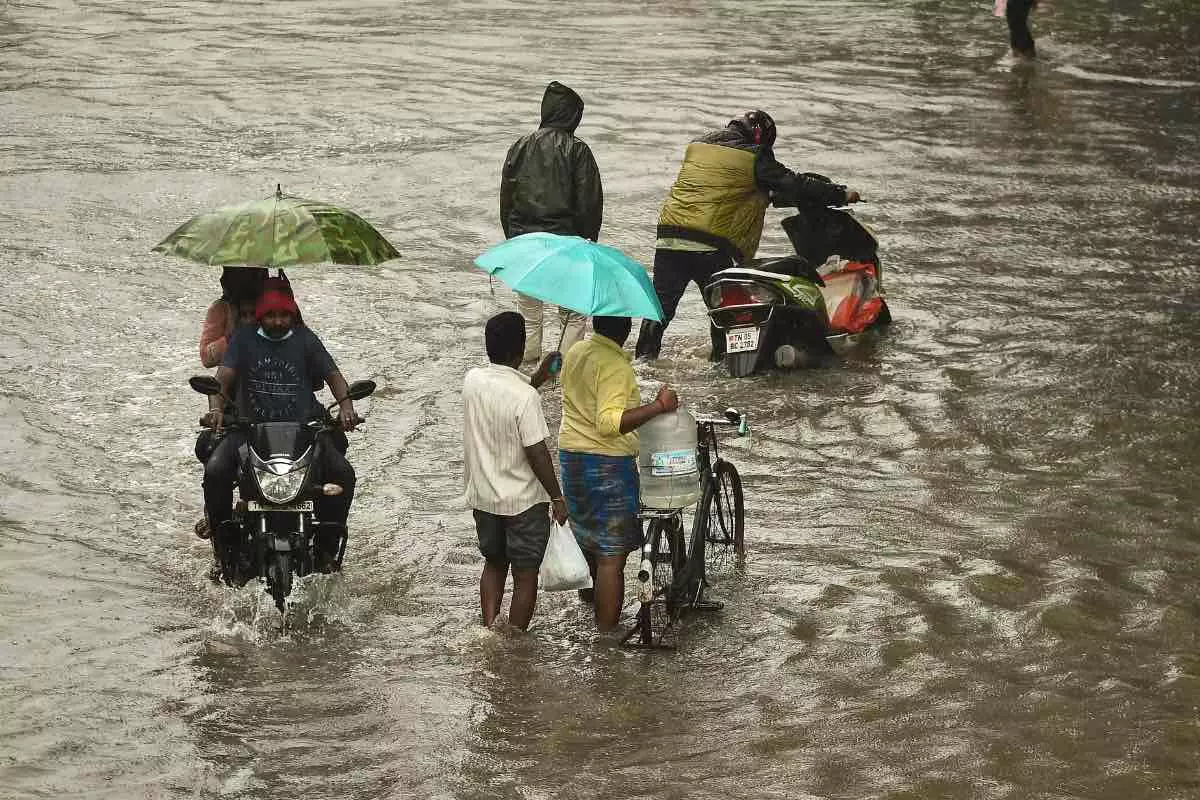
Chennai needs 2,000 km more storm water drains to handle heavy rains: Official

Chennai, Dec 15 (PTI) Ten days after Cyclone Michuang brought more than 50 cm of rain inundating many parts of Chennai, a senior official of Greater Chennai Corporation said the city needs to add at least 2,000 km more of modern stormwater drains with a higher capacity to handle showers of this magnitude.
The city currently has around 2,950 km of drains, most of which have an inadequate handling capacity of 2-5 cm per hour, S Rajendiran, GCC chief engineer for stormwater drains (SWD), told PTI.
"Chennai has a road length of 5,500 km. At least 5,000 km of drains with higher capacity are required for the city to handle such heavy rains. New drains coming up in the northern, western and southern parts of the city are being built to handle rain precipitation of 7-8 cm/hour," he said.
The official was referring to the 767 km of drains being constructed at a cost of Rs 3,520 crore in Kosasthalaiyar river basin (North and West Chennai) and 360 km of drains built in Kovalam river basin (South Chennai) at Rs 1,715 crore.
Since 2021, the GCC has demolished around 100 km of older drains to improve their carrying capacity from 2-5 cm/hour to 8 cm/hour based on inputs by the Thirupugazh committee and the IIT-Madras, Rajendiran said.
The committee was appointed by the DMK government in 2021 to advise on mitigation and flood management in Chennai.
"In these localities (Chennai city), we noticed that water was able to drain much faster," he said, adding that the civic body has built around 900 km of drains since 2021.
Responding to a question about inundation in areas with stormwater drains, Rajendiran blamed a combination of factors across different parts of the city, including overflowing canals and rivers and a high tide at the sea.
"For instance, Central Chennai areas around Otteri Nullah remained flooded as the canal was filled to the brim," he said.
Though the canals would be desilted and widened to increase its carrying capacity, modern technology similar to Netherlands’ shutter pumping system could not be replicated at the mouths of Cooum and Adyar rivers due to their big width, he said.
The 33 canals maintained by the GCC and 16 canals by the state’s public works department (PWD) covering 161 km through the city act as a flood water carrier from the roads to the Kosasthalaiyar, Cooum and Adyar rivers, which ultimately drain into the Bay of Bengal.
For southern Chennai areas like Madipakkam, Velachery and Pallikaranai which lie along the IT corridor, Rajendiran said that the lakes here are not connected with each other by defined canals and houses built in the flood plains bore the brunt of sheets of water when they overflowed.
"The southern part of the city has a chain of lakes and ponds which do not have a defined interlinking canal. Buildings constructed in erstwhile farmlands were completely inundated by sheets of water flowing between these water bodies," he said.
The GCC’s action plan for these localities will be focussed on desilting water bodies to increase its water retention capacity, erecting solid bunds and building canals to have a defined path for overflowing water. "This will draw on the success of restoration of 210 waterbodies in the city which absorbed the impact of heavy rainfall this year," Rajendiran said. PTI

